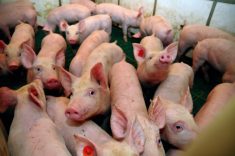Canada’s agriculture sector stands at the threshold of generational opportunity — and existential risk.
In a world hungry for sustainably produced, high-quality food, we are blessed with rich soil, abundant water and world-class growers.
However, we are shackled by a regulatory system that too often mistakes caution for leadership and complexity for safety.
The time has come to cut the anchor.
Canada should be a global agri-food powerhouse. The Barton Report projected that agri-food could be a top driver of national prosperity, contributing an additional $30 billion to gross domestic product if we simply aligned our systems with our strengths.
Read Also

Why agriculture is Canada’s energy ace
Why isn’t agriculture getting more play in Canada’s quest for efficient, renewable energy production? It should be
Yet rather than catalyzing investment and innovation, our regulatory frameworks often serve as barriers — slow, opaque, and increasingly uncompetitive.
Nowhere is this more evident than in the operation of the Pest Management Regulatory Agency.
While the United States and Brazil approve safe, science-based crop protection tools quickly by comparison, Canada is viewed as the laggard.
Tools that have been rigorously vetted and embraced by peer regulators languish in Canadian bureaucratic limbo. The result? Canadian farmers are locked out of innovation, forced to compete globally with yesterday’s tools.
This is not a theoretical concern — it is a competitive crisis. Delays in approvals mean lower yields, higher pest pressure and increased production costs.
Canada’s share of global innovation dollars is shrinking as multinational companies redirect investments to faster, more predictable jurisdictions.
And with proposed regulatory fee increases of up to 256 per cent, the situation threatens to deteriorate further, especially for small and niche registrants who support specialty and minor-use crops.
The agriculture industry rightly warns that these increases will create insurmountable barriers to innovation, impairing both research and product registration.
They also caution that without a transparent, well-prioritized plan for reform, simply charging more will not result in better outcomes.
Indeed, in 2024, despite an increase in resources, the PMRA’s performance fell well below target — proof that cost alone cannot cure structural inefficiency.
This is not just a PMRA issue. It is a Canadian governance issue.
Too often, our regulatory systems are shaped by inertia, not intention. They are reactive when they should be anticipatory. They are risk-averse when they should be risk-managed. And they confuse process with progress.
We must reject the false choice between safety and speed. World-class science, smart risk frameworks and public confidence can — and must — coexist with timely access to innovation.
Canada needs an institutional transformation: oversight with professional regulatory delivery — independent, professional and laser-focused on outcomes.
This body would not write policy; it would oversee it. Its mandate would be unambiguous: to ensure that Canada’s regulatory system enhances — not erodes — our competitiveness.
This team should be:
• Independent and expert-led, free from political swings or ideological shifts.
• Outcome-oriented, measured not just by compliance, but by economic and innovation impact.
• Globally aligned, adopting science- based approvals from trusted peers such as the U.S.’s Environmental Protection Agency and Brazil’s ANVISA to accelerate safe innovation.
• Transparent and accountable, with service standards, stakeholder feedback mechanisms and performance benchmarks built in.
• This is not deregulation. This is world-class, mission-driven regulation — modelled after what works in the most competitive agricultural economies on Earth.
Every day that we delay reform, the costs compound. Investment hesitates, innovation bypasses us and Canadian farmers are left behind — not by a lack of talent or ambition, but by the weight of outdated systems.
Canada is already paying the price.
Our competitors are accelerating. Our share of global crop input R&D is shrinking. Our ability to feed ourselves and the world — while protecting the environment — is being compromised by a bureaucracy that rewards process over progress.
The Barton Report was clear: Canada must double down on sectors where we can lead. Agri-food is at the top of that list, but leadership requires systems built for purpose, not perpetuity.
There are moments in a nation’s story when it must choose between defending the status quo and building the future. For Canadian agriculture, that moment is now.
We do not need another consultation. We need courageous implementation.
We must cut the anchor, build the vessel and sail boldly into a future where Canadian agriculture is not just surviving, but leading — not tomorrow, not after another five-year review, but now.
Darcy Pawley is executive director and Daryl Fransoo is chair of the Wheat Growers Association.















